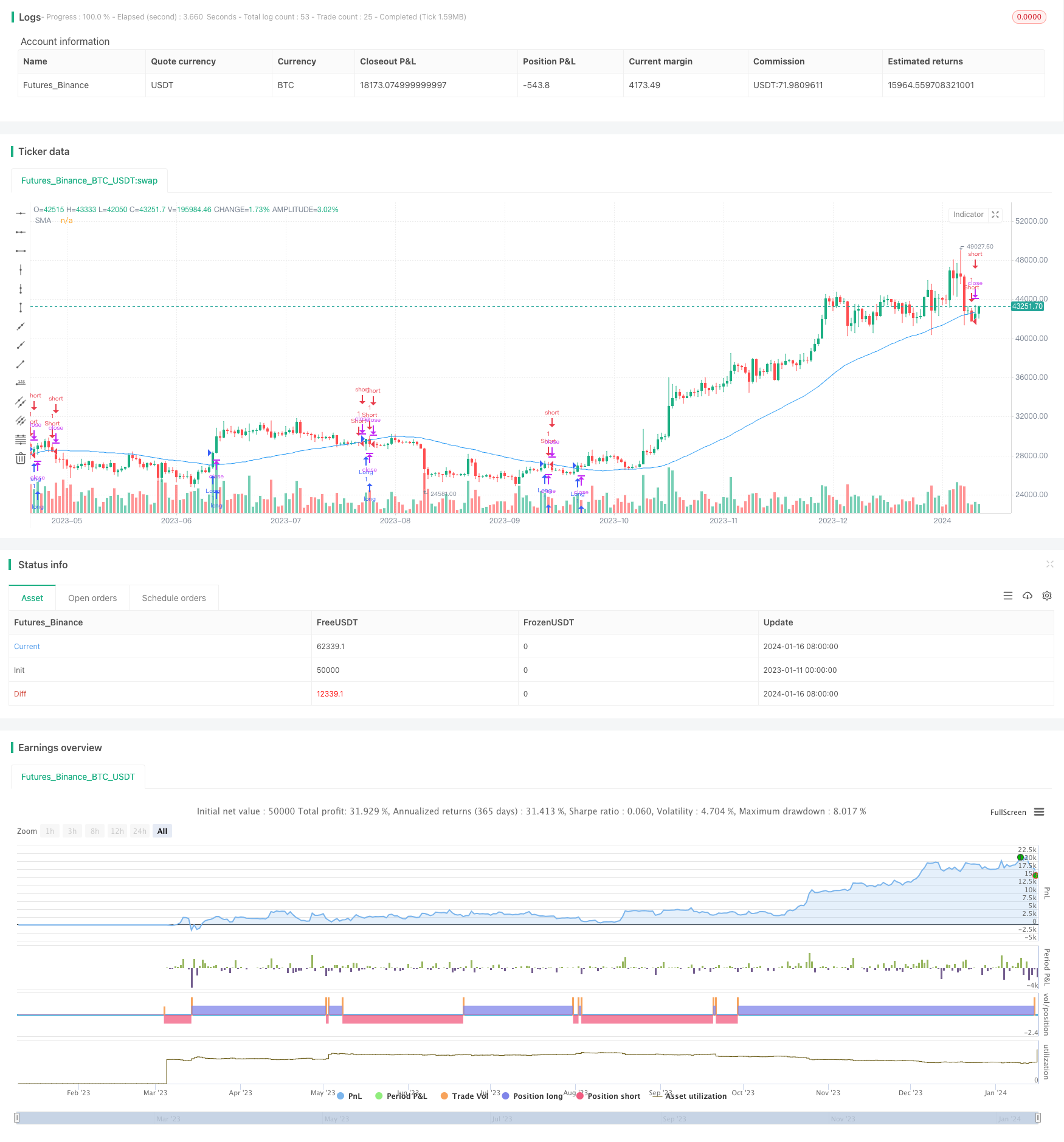
概述
本策略名称为“伦敦时间段SMA交叉ETH反转交易策略”。该策略的主要思想是利用伦敦交易时段的高流动性,结合SMA均线的金叉死叉信号,对ETH/USDT这个主流数字货币交易对进行反转交易。
策略原理
该策略的核心逻辑是首先确定伦敦时段的交易时间,然后计算一定周期的SMA均线,再在伦敦时段判断价格是否与SMA发生金叉或死叉。具体来说,该策略首先定义了伦敦时段的开始和结束时间,然后设置了SMA均线的长度参数为50周期。在此基础上,该策略使用ta.sma()函数计算出50周期的SMA均线。接下来,该策略判断当前价格是否在伦敦时段,以及是否在回测时间范围内。在满足这两个条件的情况下,使用ta.crossover()和ta.crossunder()函数判断价格与SMA均线是否发生了金叉和死叉。当发生金叉时,做多;当发生死叉时,做空。
该策略的关键优势在于利用了伦敦时段的高流动性进行交易,可以获得更好的入场机会。同时,SMA均线的金叉死叉信号是经典且有效的技术指标信号。所以,这种组合可以在一定程度上过滤假信号,提高策略的稳定性和盈利率。
策略优势
- 利用伦敦时段的高流动性,可以获得更好的入场时机
- SMA均线金叉死叉是经典且有效的技术指标信号
- 组合使用可以提高信号质量,过滤假信号
- 采用反转交易方式,适合短线交易
- 资金利用率高,可以通过杠杆放大收益
策略风险及解决方法
该策略也存在一定的风险,主要包括:
- 趋势市场中金叉死叉信号可能频繁被打击
- SMA周期设置不当,可能产生过多假信号
- 反转交易容易受困于震荡行情
对于这些风险,可以通过以下方法加以控制和解决:
- 结合趋势指标,避免在趋势震荡中使用
- 优化SMA参数,寻找最佳交易周期
- 设置止损位,控制单笔损失
策略优化方向
该策略还存在以下可优化的地方:
- 可以引入其他指标进行组合,例如RSI、KD等,形成多指标过滤规则,提高信号质量
- 可以优化SMA均线的周期参数,寻找最佳交易周期
- 可以在SMA均线基础上,再引入longer时间周期的均线,形成多均线交叉组合
- 可以对交易时段进行优化,测试哪些时段的交易效果最好
- 可以引入机器学习算法,对信号进行训练和过滤
总结
整体来说,本策略通过高流动性时段交易和均线交叉的经典技术指标组合,实现了一个较为简单实用的短线反转交易策略。该策略具有资金利用率高,技术指标简单,容易实施等优势。但也存在一定的风险,需要对参数、止损以及交易时段等进行测试和优化,以便获得更好的稳定盈利能力。
策略源码
/*backtest
start: 2023-01-11 00:00:00
end: 2024-01-17 00:00:00
period: 1d
basePeriod: 1h
exchanges: [{"eid":"Futures_Binance","currency":"BTC_USDT"}]
*/
//@version=5
strategy("London SMA Strategy ", overlay=true)
// Define London session times
london_session_start_hour = 6
london_session_start_minute = 59
london_session_end_hour = 15
london_session_end_minute = 59
// Define SMA input parameters
sma_length = input.int(50, title="SMA Length")
sma_source = input.source(close, title="SMA Source")
// Calculate SMA
sma = ta.sma(sma_source, sma_length)
// Convert input values to timestamps
london_session_start_timestamp = timestamp(year, month, dayofmonth, london_session_start_hour, london_session_start_minute)
london_session_end_timestamp = timestamp(year, month, dayofmonth, london_session_end_hour, london_session_end_minute)
// Define backtesting time range
start_date = timestamp(2021, 1, 1, 0, 0)
end_date = timenow
// Filter for London session and backtesting time range
in_london_session = time >= london_session_start_timestamp and time <= london_session_end_timestamp
in_backtesting_range = time >= start_date and time <= end_date
// Long condition: Close price crosses above SMA during London session
long_condition = ta.crossover(close, sma)
// Short condition: Close price crosses below SMA during London session
short_condition = ta.crossunder(close, sma)
// Plot SMA for reference
plot(sma, title="SMA", color=color.blue)
// Strategy entries and exits
if (long_condition)
strategy.entry("Long", strategy.long)
if (short_condition)
strategy.entry("Short", strategy.short)